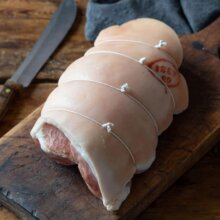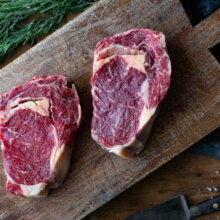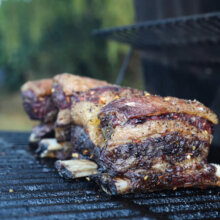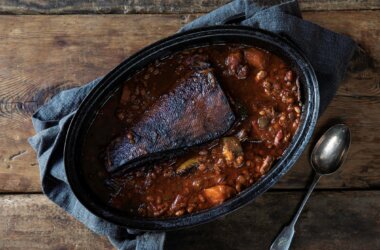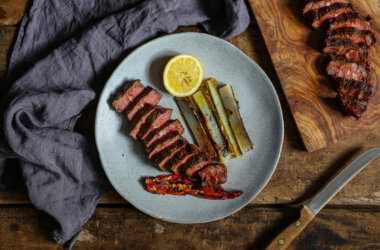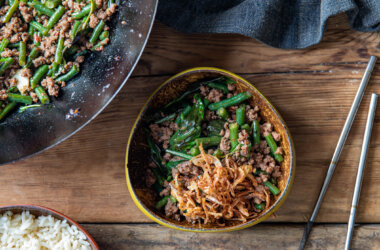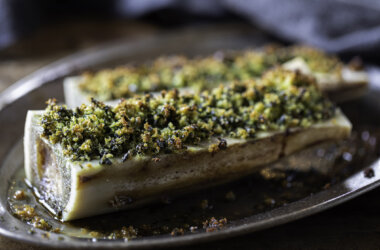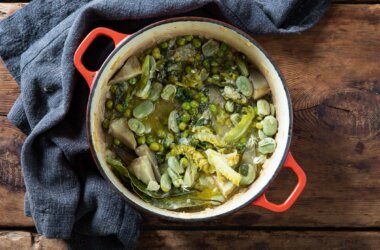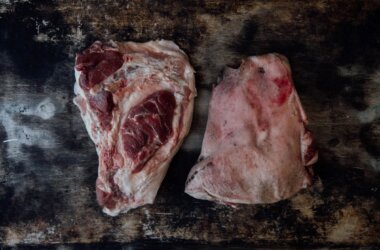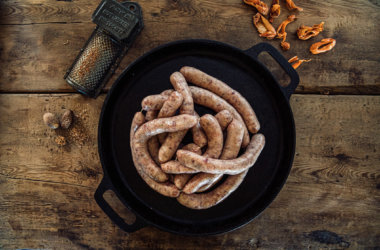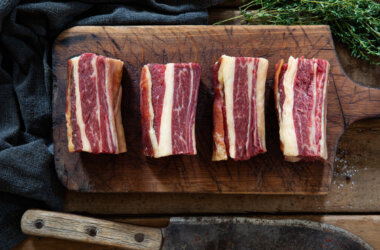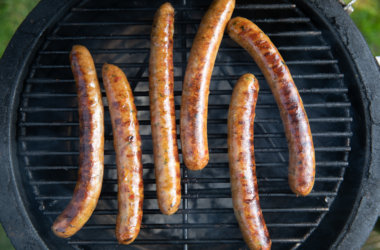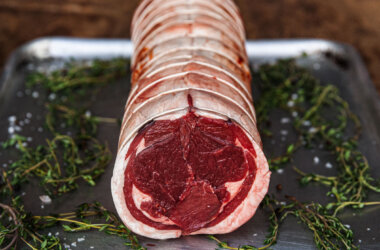
What is bavette steak?
Known as the “butcher’s cut”, the bavette steak is known to be reserved by butchers for their own enjoyment. Sourced from the abdominal muscles of the cow, this loose, open-textured cut is rich and deep in flavour due to its high degree of very fine intramuscular fat (marbling).
The base of the flank is one of the most highly exercised parts of the cow – this means the bavette steak is extremely fibre-dense.
Bavette steak cooking time
If you don’t treat your bavette steak correctly, there’s a danger of it becoming tough and quite chewy. Because its intramuscular fat is so fine, it can be easily overcooked and dried out, so it needs to be seared quickly and rested well to make the most of those delicious flavours.
Despite the above, the thickness of a bavette steak can vary somewhat, so cooking times can vary – developing a good knowledge of how a rare steak feels to the touch is helpful, see our top tips below for more detail.
We think a bavette steak is best served pink (rare) for the juiciest results – this will take around 8-10 minutes.
The best way to cook bavette steak
- Take your bavette steaks out of the refrigerator.
- Remove your meat from the vacuum packaging and pat dry any moisture. Allow it to come up to room temperature.
- Heat a griddle or heavy-based frying pan until smoking hot.
- Just prior to cooking, rub vegetable oil over both sides of the steaks and season with salt and pepper.
- Place the steaks in the pan and brown them on both sides, around 90 seconds per side – the steaks will naturally release from the pan when a crust has formed, so if they adhere to the pan at all, wait a few moments and try again (a rich, golden crust should have formed).
- Turn the heat down a touch and cook for a total of 6-8 minutes, turning the steaks approximately every 30 seconds throughout.
- Remove the steaks from the frying pan and leave to rest in a warm place for a minimum of 8 minutes.
Top tips
- To gauge how done your meat is while cooking, you can carry out a quick and reliable finger test to ensure it is rare. Prod the palm of your hand with your finger, just below your thumb. It’s a little soft and fleshy. Now bring your thumb towards your pointer finger, and touch the same area of your palm again. It will feel slightly firmer, which is what a rare steak should feel like.
- It’s important to carve your bavette steaks against the grain, or they will be chewier rather than desirable. As they’re characterised by their pronounced coarse grain, it makes it easy to identify the direction of the grain.
Bavette steak recipe
Try topping your bavettes steaks with a slice of Roquefort butter or served alongside thick, punchy Aïoli. Alternatively, Sebby Holme’s Crying tiger beef noodles are enough to make your tastebuds (and eyes) water.
